► New e-Hybrid claims up to 49.6mpg
► Prices start from £32,895
► Joins PHEV Compass 4xe in line-up
‘Hold on,’ I can hear you say. ‘We’ve seen this before! Hasn’t Jeep already launched a hybrid version of the Compass?’
The answer is yes, it has – but the one you’re thinking of is a plug-in hybrid. Now, the brand has bolstered its range with a new full hybrid model that works on similar principles to the Toyota Prius. Which is to say that you can’t plug it into the mains to charge it up.
It’s called the e-Hybrid – and it forms part of the brand’s aggressive electrification strategy that will see Jeep move away from petrol and launch a host of new electric cars over the next decade. The first of this bunch has already been teased, and is set to arrive in 2023.
But what about the Compass e-Hybrid?
Yes, I’m getting to that. The powertrain in the Compass e-Hybrid is based around a new 1.5-litre four-cylinder petrol engine but, rather than having the electric motor mounted on the rear axle, it’s mounted in the gearbox. This also means that the e-Hybrid is front-wheel drive only, so it’s nowhere near as capable off-road as its PHEV sibling. Ask us how we know.
The watered down hybrid system also means the Compass e-Hybrid is neither as fast nor as efficient as the Compass 4xe. Jeep claims a 0–62mph time of 10 seconds compared to 7.3 seconds in the PHEV) and fuel economy of between 46.3–49.6mpg. However, during our test drive, we were seeing figures of between 36–39mpg on the trip computer.
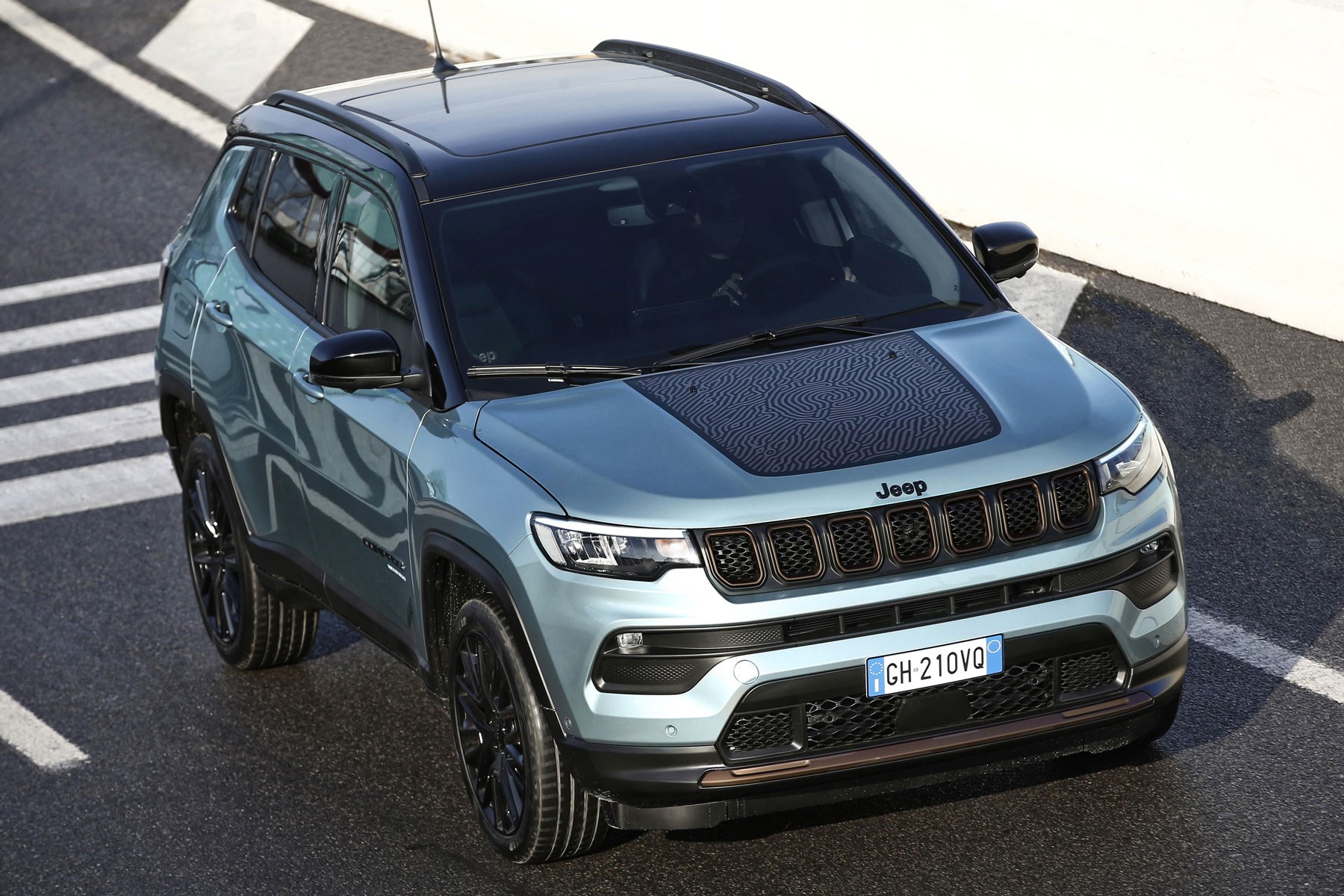
The powertrain harvests the energy that would otherwise be wasted when braking and stores it in a battery mounted in the central tunnel (so boot space remains the same at 438 litres). This energy can then be deployed to assist the petrol engine or power the vehicle entirely during low-speed manoeuvres such as parking or driving in stop-start traffic.
This is great for those that don’t have access to a wallbox, or for those that simply can’t be bothered with the hassle of plugging their car in every night. However, if you’re looking for this sort of car, it’s worth noting that there are smoother systems on the market.
Jeep’s setup isn’t particularly sophisticated – it’s quite clunky when shifting between its limited EV mode and hybrid mode. The automatic gearbox is also quite slow to respond as the electronics figure out how much of each propulsion type is required for the situation.
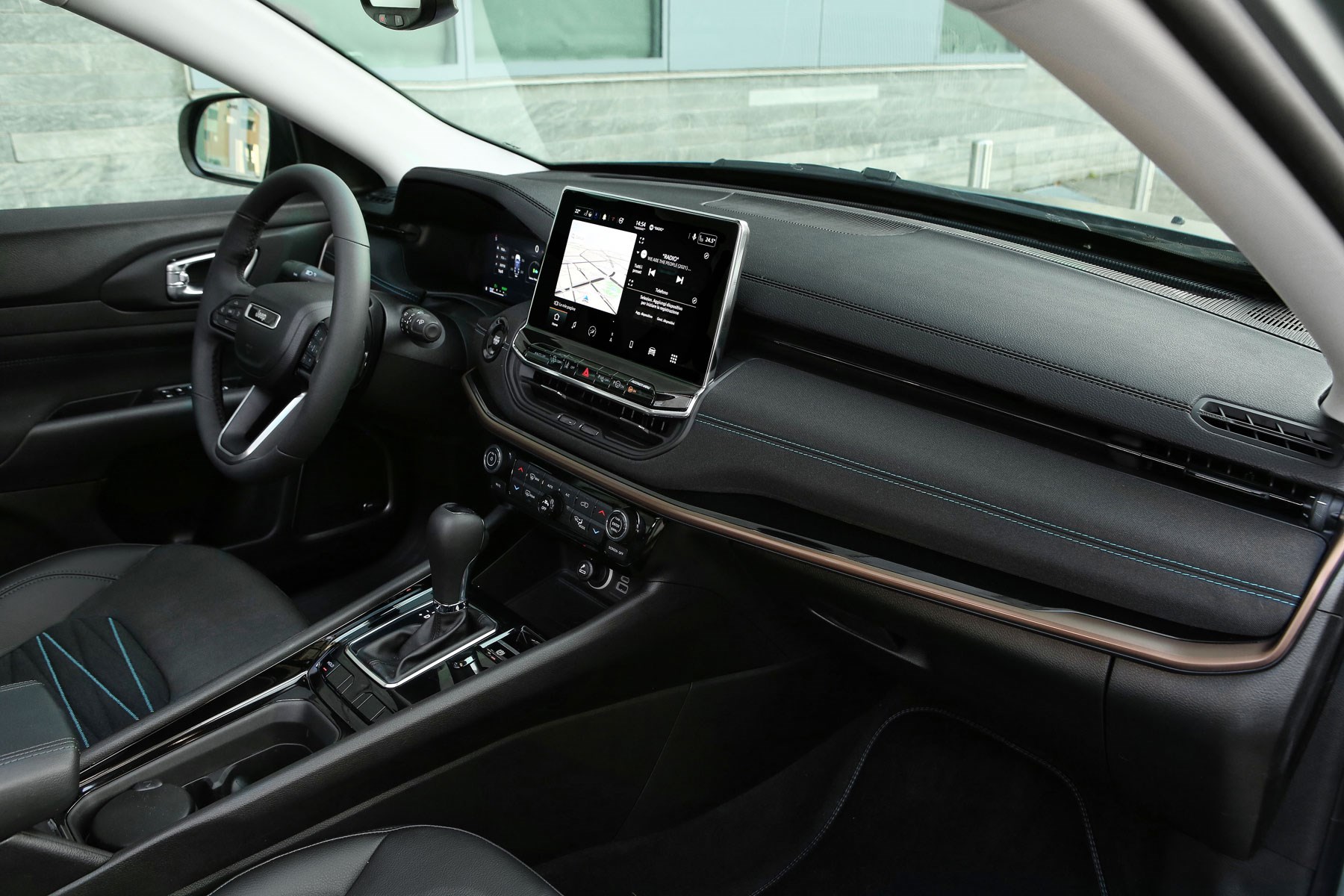
For example, if you ask for a quick burst of acceleration to get ahead of the car to your right on a roundabout, it can be a good two seconds before you get any response from the gearbox – by which point your window of opportunity has passed.
It is, however, very eager to use what little electric power it has. It always starts in EV mode and, if you’re gentle on the throttle, you can pootle around town for a good while before the petrol engine kicks in. The energy regen is entertaining, too, as there’s a gauge on the dash that you watch increase as you step on the brakes like a health bar in a video game.
In terms of handling, the driving experience for the Jeep Compass e-Hybrid is similar to that of the 4xe. There’s still plenty of suspension travel, which means you can take speed bumps at a far greater velocity than you really ought to. The trade-off is body roll – but the softer setup works in the car’s favour on the motorway, where it irons out dips and crests well.
Is it worth it over the PHEV?
Well. Maybe. It depends on what you want from your car and whether you’re willing to plug it in every night. If so, the PHEV-powered 4xe would probably be a better bet, as the battery can store enough energy to cover around 25 miles without burning a drop of petrol – and that’s more than enough for heading to shops or commuting to work.
If you can’t be bothered faffing with a plug socket, then the Compass e-Hybrid should trim back your fuel costs considerably – Jeep says the system offers comparable real-world mileage to a diesel engine. But we stress again, there are better systems out there. If you’re buying the Compass, you’ll do so for its looks rather than the merits of its hybrid system.
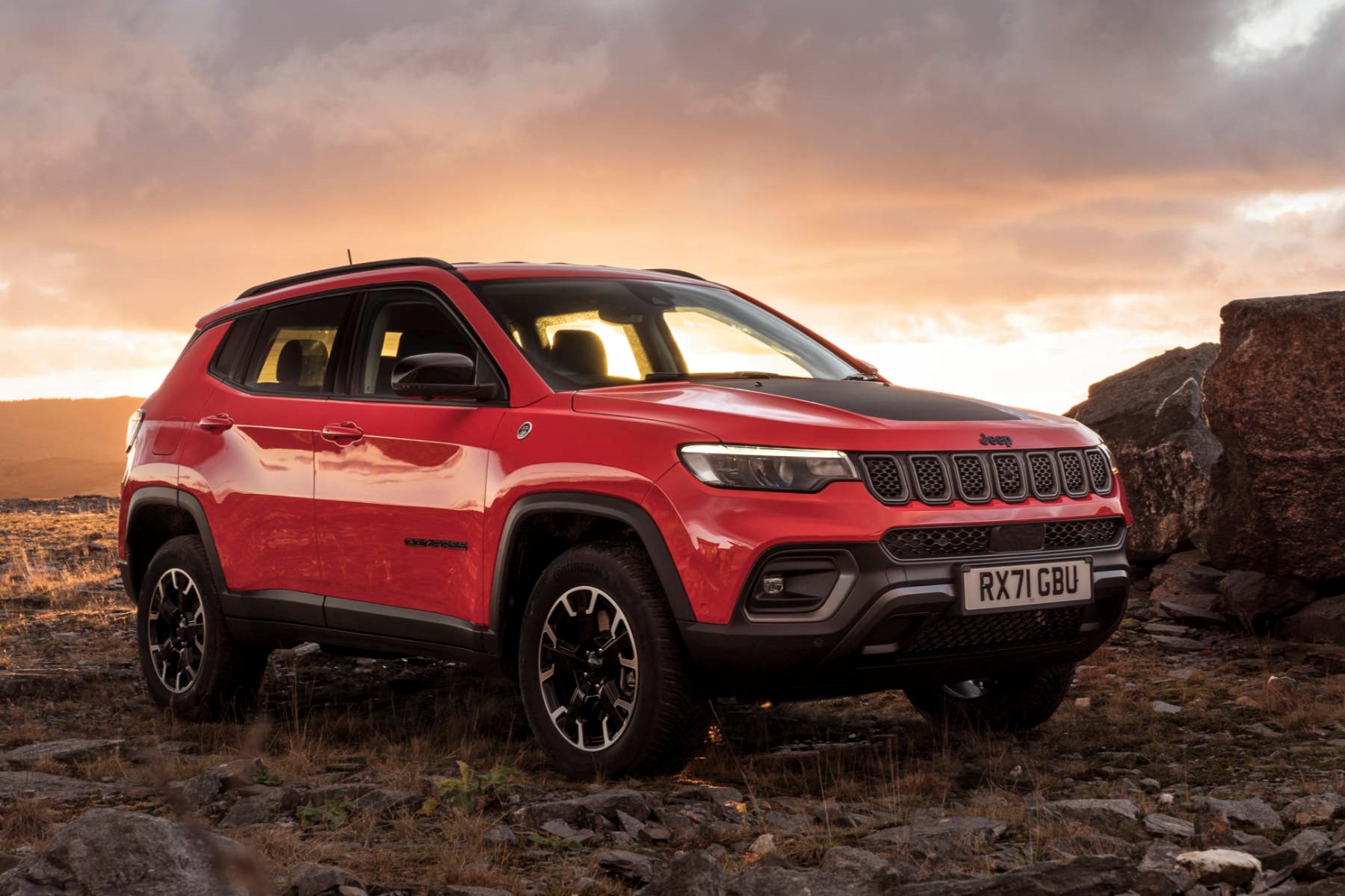
Both cars offer the same amount of space (of which there’s plenty up front and slightly less in the rear), and both have comparable levels of equipment. Every variant gets the same 10.1-inch touchscreen, as well as the all-important Apple CarPlay and Android Auto support.
Buyers can even have both hybrid powertrains with Jeep’s new eco-minded Upland trim-level, which features environmentally friendly paint and seat material made from recycled plastic that was collected from the Mediterranean Sea.
So, what about the Compass 4xe?
It’s powered by the same 1.3-litre plug-in hybrid system found in the Renegade 4xe, which offers an identical output of 237bhp. Officially, Jeep says the system will provide a 0–62mph time of 7.3 seconds and an economy figure of around 155mpg – but that second figure will be much lower in the real world, especially when the battery isn’t charged.
Despite the decent specific power output, the 4xe never feels quick when compared against some of its plug-in hybrid rivals. There just doesn’t seem to be enough torque available low down in the rev-range – although it does feel considerably nippier than the new e-Hybrid.
In fully electric mode it’s easy-going. Again, it’s not fast at all – but it’s smooth and comes with very few annoyances. The petrol engine can be roused into life with a full press of the throttle, although the changeover is anything but subtle. The petrol engine is also coarse under high revs.
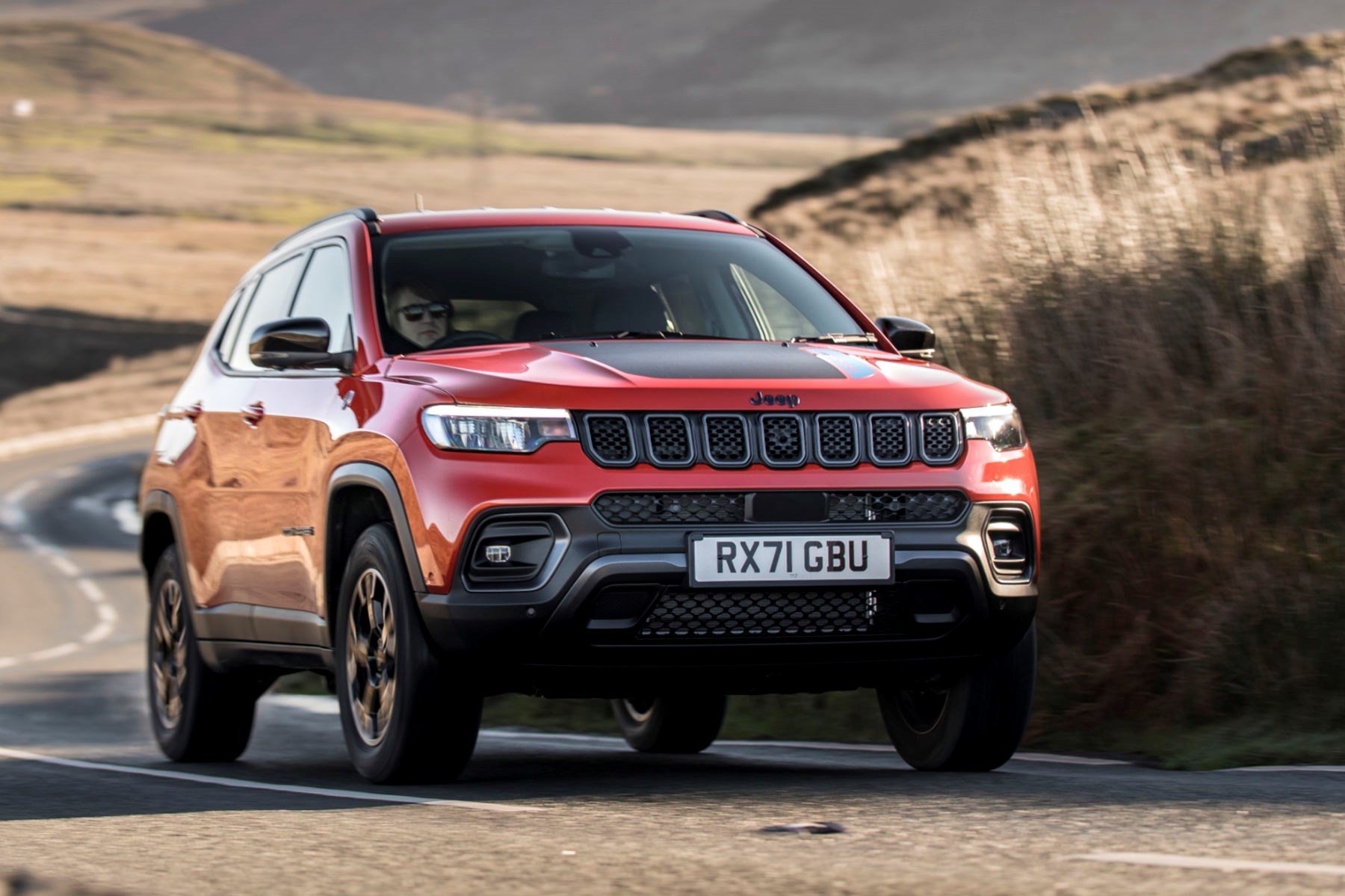
Drivers can switch between the power sources in a reassuringly simple way. There are three buttons below the heating controls to help out. Hybrid lets the computer sort it all out; Electric (surprise, surprise) switches the powertrain to electric-only mode, while e-save allows you to conserve battery for deployment later. For instance, heading into London for zero-emissions driving, or for full 4WD mode if you’re going to yeet it on an off-road course.
The 4xe’s biggest issue is it’s overall range. The 25-mile-or-so electric range is fine, but the petrol engine’s range is only around 200–225 miles. That means the car’s total mileage between fuel and charging stops is less than 300 miles, which is rubbish. Now, there are plenty of fully electric SUVs that can do better than that.
You mentioned off-road driving above. Tell us you tried it out?
Don’t worry – we tested it thoroughly. But remember, you’ll need a charged battery to make use of the car’s four-wheel drive system, as the electric motor is the only thing that’s powering the rear axle.
The setup is helped along by speccing your Compass in Jeep’s Trailhawk trim-level, which adds off-road suspension, a five-stage traction control system called Selec-Terrain and knobbly off-road tyres.
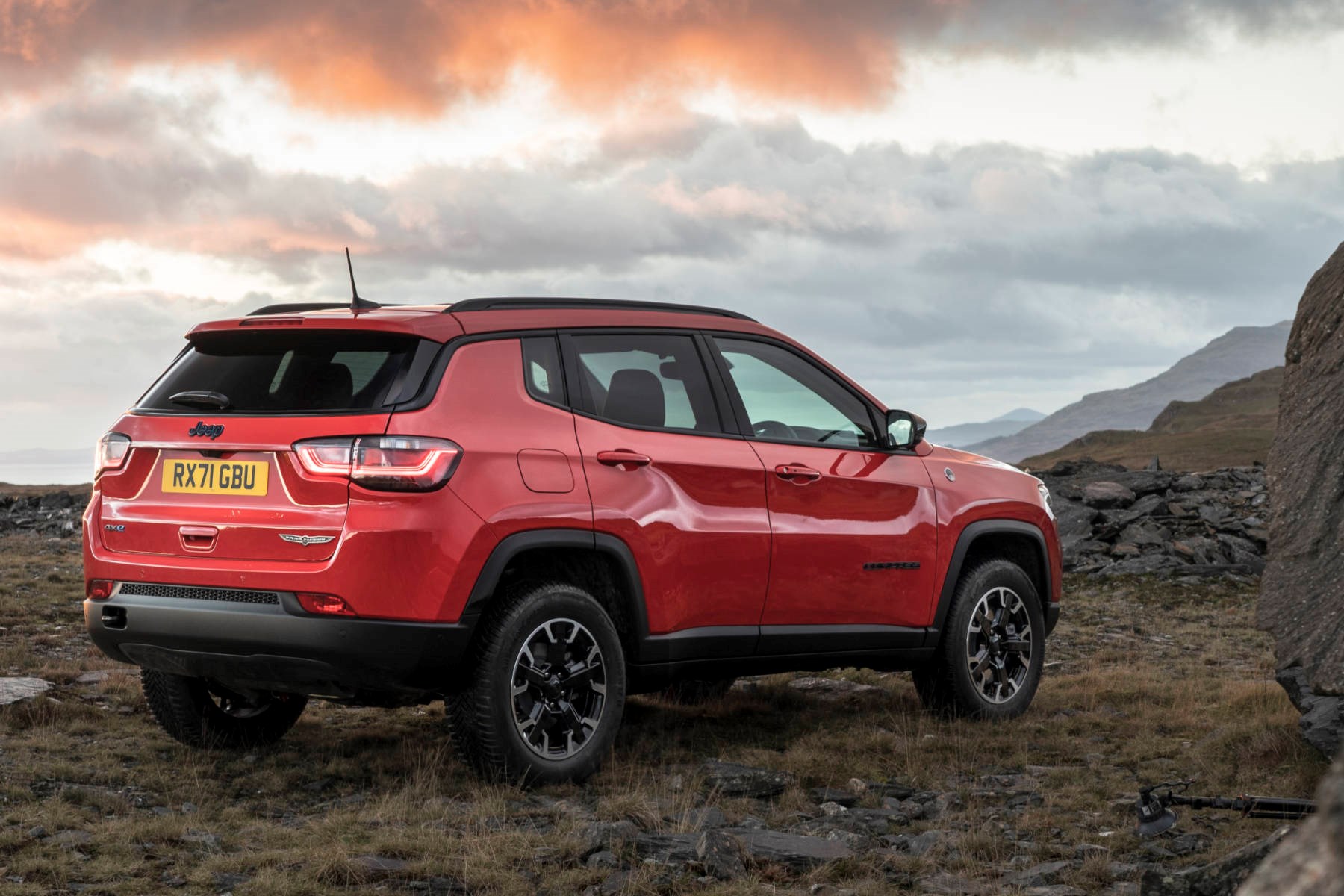
I tried out the five drivetrain modes on an off-road course in East Sussex and found that they genuinely made a difference to how much spinning the wheels did on spiky rocks and boggy terrain. Which is a welcome change from most of the current market offerings.
Over the course of an hour I didn’t get stuck once or even bottom out. Hill descent control was spot on too, constantly adjusting and never being caught out. The instructor even mentioned that the Compass was easily as competent as something like a Toyota Hilux.
Jeep Compass hybrid: verdict
As a sensible mid-sized crossover, the Compass isn’t quite as practical as a Hyundai Tucson, nor as fashionable as a Peugeot 3008, or as good value as a Nissan Qashqai. And, while both of the car’s hybrid systems improve its efficiency over its old combustion-only powertrains, neither are class-leading.
But sensible types won’t be interested in the Compass. It should, then, be seen as a less flawed, smaller, cheaper and less interesting alternative to the Jeep Wrangler.